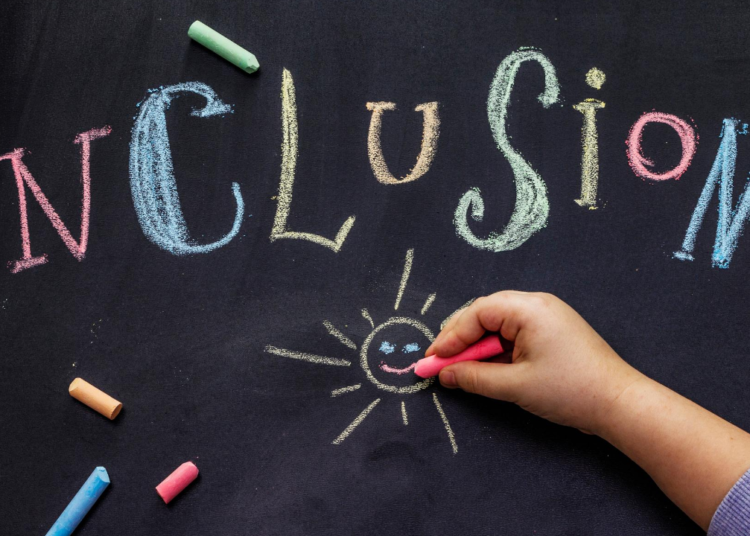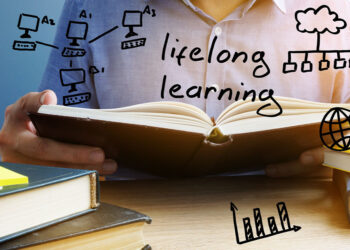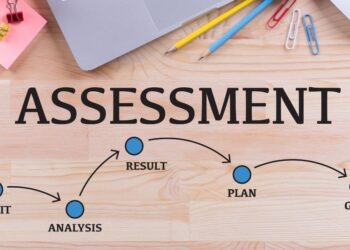Beyond Labels: Understanding the Heart of Inclusive Education
Let’s explore how inclusive education, built on Universal Design for Learning, reshapes learning environments and uplifts diverse learners.
1. The Promise of Inclusion
Recent data from the U.S. highlights a significant shift in educational outcomes when students with disabilities are integrated into general education classrooms. This inclusive approach, grounded in Universal Design for Learning (UDL), demonstrates a clear advantage over segregated special education settings. The core principle is to design learning environments that are accessible and engaging for all, fostering a sense of belonging and shared growth.
2. Academic Achievement in Inclusive Settings
Students with disabilities in inclusive classrooms show notably higher proficiency in key academic areas. These gains are attributed to collaborative teaching models, where general and special educators work together to create instruction that is both accessible and challenging. This collaborative spirit ensures that all students have the opportunity to thrive, regardless of their individual learning needs.
3. Challenging Misconceptions about Standards
A common misconception is that inclusive education requires lowering academic standards. However, the reality is quite the opposite. Inclusive environments maintain high expectations while providing targeted supports and varied assessments to empower diverse learners. By focusing on individual strengths and providing necessary accommodations, these settings unlock potential that might otherwise remain untapped.
4. Fostering Engagement and Motivation
The success of inclusive education lies in its ability to foster greater engagement and motivation among all learners. By focusing on strengths rather than perceived deficits, and by providing multimodal materials and varied assessments, inclusive classrooms create opportunities for all students to participate fully and achieve their potential. This approach transforms the learning experience, making it more relevant, accessible, and rewarding for everyone involved.
Tools of Empowerment: How Accessibility Transforms Learning Environments
Discover how creating accessible learning environments can unlock the full potential of every student, fostering inclusivity and driving academic success.
1. The Power of Inclusive Education
Inclusive education, especially when guided by Universal Design for Learning (UDL) principles, is proving to be a game-changer in U.S. schools. It’s not just about physical presence; it’s about creating environments where every student, regardless of ability, can thrive academically.
2. Accessibility as a Catalyst
Accessibility tools are the unsung heroes of inclusive classrooms. From visual aids that clarify complex concepts to assistive technology that bridges learning gaps, these resources empower students by providing multiple ways to engage with the material. They ensure that every learner has equitable access to rigorous instruction.
3. Raising the Bar, Not Lowering It
The beauty of inclusive education is that it doesn’t compromise academic standards. In fact, it often leads to higher achievement levels. Students with disabilities in inclusive settings demonstrate notably higher reading and math proficiency, along with improved graduation rates, compared to those in segregated environments.
Crafting Success: The Role of Individualized Education Plans (IEP) in Personal Growth
Explore how Individualized Education Plans (IEPs) are pivotal in fostering personal growth and academic achievement for students with disabilities.
1. IEPs: A Cornerstone of Special Education
Individualized Education Plans (IEPs) stand as a cornerstone in the educational journey of students with disabilities. These plans are designed to address unique learning needs and promote academic success. The latest data reveals that in the 2022-23 school year, a significant 7.6 million students aged 3 to 21 across the U.S. benefited from special education and related services under the Individuals with Disabilities Education Act (IDEA).
2. Empowering Students Through Participation
One of the most compelling aspects of IEPs is their potential to empower students. When students actively participate in their IEP meetings, they not only gain a better understanding of their learning goals but also develop crucial self-management skills. This active involvement fosters a sense of ownership and responsibility, contributing significantly to their personal growth and development.
3. Addressing Disparities in Special Education
Despite the positive impact of IEPs, disparities persist within the special education system. Data indicates that African American students with disabilities are disproportionately affected by disciplinary measures, accounting for nearly one-third of short-term suspensions while representing only 16% of the student population. This highlights the urgent need for more equitable and inclusive practices.
4. The Ongoing Need for Systemic Improvement
The data serves as a reminder that continuous effort is required to ensure that all students with disabilities have access to a fair and supportive learning environment. While IEPs offer a valuable framework for individualized support, addressing systemic inequities and promoting inclusive practices at all levels is essential for truly empowering every learner.
Breaking Barriers: Integrating Special Needs into Everyday Classrooms
Discover how inclusive education unlocks potential and promotes equity by integrating students with special needs into mainstream classrooms.
1. Academic Achievement in Inclusive Settings
Recent data underscores the effectiveness of inclusive education, particularly when Universal Design for Learning (UDL) principles are applied. Students with disabilities in inclusive classrooms demonstrate significantly better academic outcomes compared to those in segregated settings. This highlights the importance of creating learning environments that cater to diverse needs.
2. Collaborative Teaching Models
Inclusive practices often involve collaborative co-teaching models. General and special education teachers work together to deliver instruction. By using varied assessments and multimodal content, they maintain high standards for all learners. These approaches not only benefit students with disabilities but also enhance performance among their non-disabled peers, fostering a more enriching educational experience for everyone.
Q&A
Question 1: What is the core principle of inclusive education as described in the provided texts, and how does it differ from segregated special education?
Answer: The core principle of inclusive education, grounded in Universal Design for Learning (UDL), is to create accessible and engaging learning environments for all students, fostering a sense of belonging and shared growth. This contrasts with segregated special education, which separates students with disabilities, resulting in lower academic achievement and graduation rates, as shown by the provided data (e.g., significantly lower reading, math proficiency, and graduation rates for students with disabilities in segregated settings compared to inclusive ones).
Question 2: According to the data presented, what are the key differences in academic outcomes (reading proficiency, math proficiency, and graduation rates) between students with disabilities in inclusive versus segregated settings?
Answer: The data consistently shows significantly higher academic achievement and graduation rates for students with disabilities in inclusive settings. For example, students with disabilities in inclusive classrooms showed reading proficiency of 65% and math proficiency of 60%, compared to 40% and 35% respectively in segregated special education. Graduation rates were also substantially higher in inclusive settings (85%) compared to segregated settings (60%).
Question 3: What are some common misconceptions about inclusive education, and how do the provided texts address these misconceptions?
Answer: A common misconception is that inclusive education lowers academic standards. The texts refute this, stating that inclusive environments maintain high expectations while providing targeted support and varied assessments to empower diverse learners. They emphasize that inclusive education unlocks potential that might otherwise remain untapped, leading to higher, not lower, achievement.
Question 4: What role do accessibility tools and Universal Design for Learning (UDL) play in fostering inclusive education?
Answer: Accessibility tools, such as visual aids and assistive technology, are crucial for creating inclusive classrooms. They provide multiple ways for students to engage with the material, ensuring equitable access to rigorous instruction. UDL principles guide the design of these accessible learning environments, ensuring that all learners can participate and succeed.
Question 5: Beyond academic achievement, what other benefits are associated with inclusive education, as highlighted in the provided texts?
Answer: Inclusive education fosters greater engagement and motivation among all learners. By focusing on strengths and providing multimodal materials and varied assessments, it creates opportunities for full participation and achievement. Furthermore, it promotes a sense of belonging and shared growth, positively impacting students’ social-emotional well-being.













